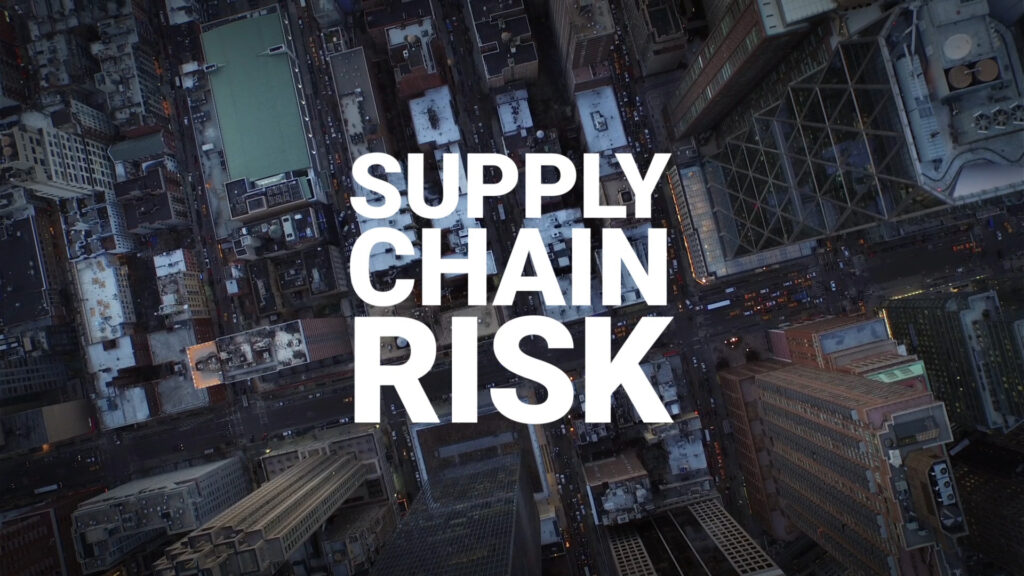
Supply chain risk management is a critical aspect of modern business operations. With increasing globalization, supply chains have become more complex and vulnerable to various types of risks that can impact the flow of goods and services. These risks, if not managed effectively, can have a significant impact on an organization’s operations, finances, and reputation.
Table of Contents
What Are Supply Chain Risks?
Supply chain risks refer to potential threats that can disrupt the flow of goods and services within a supply chain. These risks can come from a variety of sources, including natural disasters, labor strikes, shipping delays, supplier bankruptcy, cyber attacks, and more. The impact of supply chain risks can range from minor disruptions to significant financial losses and long-term damage to an organization’s reputation.
Mitigating Supply Chain Risks

Source: pinterest.com
To ensure a secure and resilient supply chain, organizations must implement effective strategies to mitigate supply chain risks. Here are some ways that organizations can boost supply chain resiliency:
Diversifying Suppliers
One effective strategy for mitigating supply chain risks is to diversify suppliers. By having multiple suppliers for critical components and materials, organizations can reduce their dependence on any one supplier. In the event of a disruption with one supplier, organizations can turn to their alternative suppliers to continue operations. However, for this strategy to work, organizations must ensure that all suppliers are equally reliable.
Implementing Contingency Plans
Another effective strategy for mitigating supply chain risks is to implement contingency plans. Contingency plans outline the steps that an organization will take in the event of a supply chain disruption. These plans should include measures such as identifying alternative suppliers, implementing alternative transportation routes, and communicating with customers and other stakeholders. Having a well-defined contingency plan in place can help organizations respond quickly and effectively to supply chain disruptions, reducing the impact on operations and finances.
Insuring Against Risks

Source: pinterest.com
Insurance is another strategy that organizations can use to mitigate supply chain risks. Supply chain insurance can protect organizations against various types of supply chain risks, including natural disasters, shipping delays, and supplier bankruptcy. This type of insurance can help organizations manage the financial impact of supply chain disruptions, ensuring that they are able to continue operations even in the face of significant risks.
Improving Supply Chain Visibility
Improving supply chain visibility is another critical strategy for mitigating supply chain risks. With real-time visibility into the flow of goods and services, organizations can quickly detect and respond to potential supply chain disruptions. This requires implementing collaboration and communication tools that enable supply chain partners to share information and collaborate in real-time.
Conducting Regular Risk Assessments
Finally, organizations should conduct regular risk assessments to identify and evaluate potential supply chain risks. These assessments should include a thorough analysis of the organization’s supply chain operations, including its suppliers, logistics, and processes. By regularly conducting risk assessments, organizations can stay ahead of potential supply chain risks and implement proactive strategies to mitigate these risks.

Source: pinterest.com
Regular Monitoring Of Risk Management Strategies
Monitoring of risk assessment strategies is a crucial component of Supply Chain Risk Management (SCRM). It helps organizations track the effectiveness of their risk mitigation strategies and identify areas for improvement.
By regularly reviewing and monitoring the risk assessment process, organizations can quickly detect and respond to changes in the risk environment, such as new or emerging risks. This enables them to adjust their risk mitigation strategies as needed and maintain a high level of risk resilience. Monitoring also helps organizations to track the effectiveness of their risk mitigation strategies, measure the results and determine if they are on track to achieve their risk management goals. This information can be used to make informed decisions about adjusting the risk assessment process and improving risk mitigation strategies.
Supply chain risks can have a significant impact on an organization’s operations, finances, and reputation. To ensure a secure and resilient supply chain, organizations must implement effective strategies to mitigate these risks. Strategies such as diversifying suppliers, implementing contingency plans, insuring against risks, improving supply chain visibility, and conducting regular risk assessments can help organizations reduce the impact of supply chain disruptions and maintain business continuity. By investing in supply chain risk management, organizations can ensure that their supply chains are secure, resilient, and able to adapt to changing market conditions.







